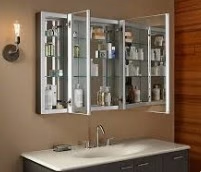Home Robotics refer to robots that serve the home environment and provide assistance and convenience for people’s daily lives. They have multiple functions, covering areas such as cleaning, companionship, and safety monitoring. The development of home robots can be traced back to the mid-20th century, when they were just simple automation devices with limited functionality and high prices. With the continuous advancement of technology, especially the development of artificial intelligence, sensor technology, and mechanical engineering, home robots are gradually becoming more intelligent, multifunctional, and affordable. Nowadays, home robots have become a part of many households, bringing great changes to people’s lives.
Types and functions of common household robots
cleaning robot
Cleaning robots are one of the most common household robots, represented by floor cleaning robots. It can automatically move around the room, sense the environment through various sensors, avoid obstacles, and perform operations such as cleaning, vacuuming, and mopping on the ground. Some high-end floor cleaning robots also have the ability to intelligently plan paths, which can efficiently complete cleaning tasks and save people a lot of time and energy.
Accompanying Robot
Companion robots are mainly used to accompany the elderly, children, and pets. They can have voice communication with users, play music, stories, and even engage in simple interactive games. For the elderly, companion robots can provide emotional support and alleviate feelings of loneliness; For children, it can serve as a partner for learning and entertainment, helping them develop their intelligence; For pets, companion robots can play with them and consume their energy.
Security monitoring robot
Security monitoring robots can monitor the home environment in real time, detecting abnormal situations such as fires, smoke, illegal intrusion, etc. through cameras and sensors. Once an anomaly is detected, it will promptly send alert information to the user to ensure the safety of the home. In addition, some security monitoring robots can also be integrated with smart home systems to achieve remote control and view household situations.
The advantages of home robots
Improve life efficiency
Home robots can automatically complete various household chores and tasks, giving people more time to do what they love. For example, cleaning robots can regularly clean homes and keep the home environment tidy; Intelligent kitchen robots can help people prepare meals and save cooking time.
Provide personalized services
Modern home robots typically have artificial intelligence technology that can learn users’ habits and preferences and provide personalized services. For example, companion robots can recommend music, movies, and books based on users’ interests and hobbies; The intelligent temperature control robot can automatically adjust the indoor temperature according to the user’s habits.
Enhance family security
Security monitoring robots can monitor the home environment 24 hours a day, promptly identifying and addressing various safety hazards. In addition, some home robots can also be linked with smart home devices such as door locks and windows to further enhance the safety of the home.
Challenges faced by home robots
Technical bottleneck
Although home robot technology has made great progress, there are still some technological bottlenecks. For example, the intelligence level of robots is not high enough, and their adaptability in complex environments is limited; The battery life of robots also needs to be improved, and they cannot work continuously for a long time.
Privacy and Security Issues
Home robots typically need to collect and process large amounts of user data, which may raise privacy and security concerns. If these data are leaked or abused, it may cause unnecessary trouble to users. In addition, home robots may also become targets of hacker attacks, posing a threat to home security.
High cost
At present, the prices of some high-end home robots are still relatively high, which makes many consumers hesitate. Although the price of home robots is expected to gradually decrease with the development of technology and the expansion of scale, cost remains an important factor restricting the popularity of home robots in the short term.
The Future Development Trends of Home Robots
More intelligent
Future home robots will have higher levels of intelligence, better understanding human language and behavior, and providing more thoughtful services. For example, robots can provide corresponding companionship and support based on the user’s emotional state; In the event of an emergency at home, robots can automatically take measures to respond.
Multi functional integration
Future home robots will no longer be limited to a single function, but will develop towards multifunctional integration. For example, a home robot can not only clean, but also accompany family members, and perform safety monitoring, achieving multi-purpose use.
Deep integration with smart home systems
Home robots will be more closely integrated with smart home systems to achieve interconnectivity and collaborative work between devices. For example, when the security monitoring robot detects abnormal situations, it can automatically control devices such as door locks and windows to enhance the security of the home Leading AI; After completing the cleaning task, the cleaning robot can automatically link with the intelligent lighting system to adjust the indoor lighting.
As a product of technological development, home robots have gradually entered people’s lives and brought many conveniences to home life. Although home robots still face some challenges at present, with the continuous advancement and innovation of technology, we believe that the future of home robots will be even better, and they will become indispensable intelligent partners in people’s lives.






